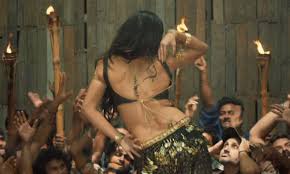Aditya Vikram Sengupta’s debut feature is all set for a world premiere at Venice Days, an independent sidebar of the Venice Film Festival, that runs from August 27 to September 6.
Aditya, who is a graduate of the National Institute of Design and dabbles in graphic design, animation and advertising, talks about his Labour of Love:
What is Labour of Love about?
Labour Of Love is set against the backdrop of a spiraling recession that has Calcutta in its grips. Several people are losing their sources of livelihood and faced with the uncertainty of losing their own jobs, the film’s two central characters are under constant pressure to sustain their livelihood. The film deals with their strained routines as well as the calmness they depict in dealing with the eventualities of their existence.
There are no dialogues in the film. What was the idea behind not having dialogues?
Well technically, there are no on-screen dialogues in the film. My idea was to engage the viewer as a participant in the proceedings of the film, rather than merely a spectator. Although my original screenplay did have dialogues, as I went on shooting the film, dialogues just seemed unnecessary and out of place and I let the film take its own course.
The first thing I asked the actors to not do is Act. I wanted them to behave normally in front of the camera. I wanted them to live the spaces, the silences and experience the moods. The character sketches were designed in a way that they do not become strong characters.
How did you finance the film?
Like most independent films, it was challenging to raise money for the film. My wife Jonaki and I approached several producers regarding the film and after a few rejections, we decided to produce it ourselves under our company For Films. We invested our savings and also raised money from investors to finish the film.
Last year, I showed an assembly cut of the film to producer Sanjay Shah (Salaam Cinema) who had previously worked on Ashim Ahluwalia’s Miss Lovely. Although our film was in its early edit stages, he showed a lot of enthusiasm in the vision and expressed his interest in developing it and working on its marketing and distribution strategy.
Are you looking at a theatrical release for the film? Will it not be difficult to market a film without dialogues?
I am quite confident that we will find distribution for the film. I think the audiences from any part of the world can relate to it.
What kind of preparation did you demand from your actors, as the film relied majorly on their expressions?
The first thing I asked the actors to not do is Act. I wanted them to behave normally in front of the camera. I wanted them to live the spaces, the silences and experience the moods. The character sketches were designed in a way that they do not become strong characters. I didn’t want their thoughts to influence the viewers at all. We might get hints of how they could be feeling, but not exactly what they are feeling. In the film, the actors are merely bodies that allow us to live and experience their lives.
What kind of music have you used in the film?
We are using a few old Bengali songs in the film and the very talented Alokananda Dasgupta, who previously composed music for Fandry and B.A. Pass, has composed a theme track for the film.
Tell us about your background
My background is actually design. I studied Graphic Design at the National Institute of Design and spent all my free time making live-action and animation films. I worked with channel [v] as a promo director for 3 years and then quit to work on my own projects. I started painting and exhibiting my art works and eventually started freelancing as an ad filmmaker and animator to earn a living.
I decided to make Labour Of Love early last year as I always knew that films would allow me to combine my different interests…and that was exciting. The only challenge I faced was trying to find a producer to support the project. But I was determined to make the film and I had to make it happen. We managed to put the resources together, found amazing people to collaborate with and that’s how the film was made.
What kind of cinema inspires you?
I am inspired by a wide range of cinema and filmmakers. Amongst my favourites are Robert Bresson, Bengali filmmakers Satyajit Ray, Tapan Sinha and Tarun Majumdar and contemporary filmmakers Nuri Bilge Ceylan, Takashi Miike, Tsai Ming Liang and many, many more











